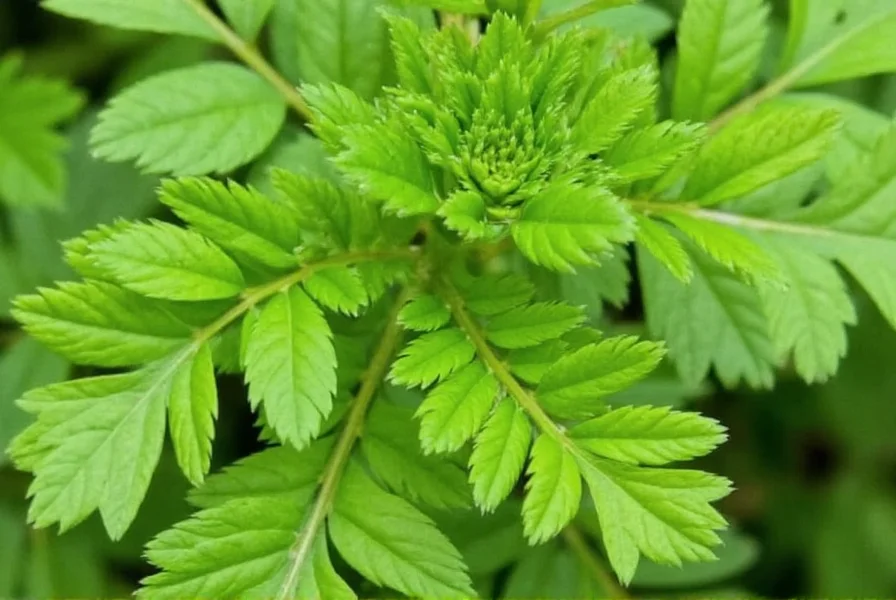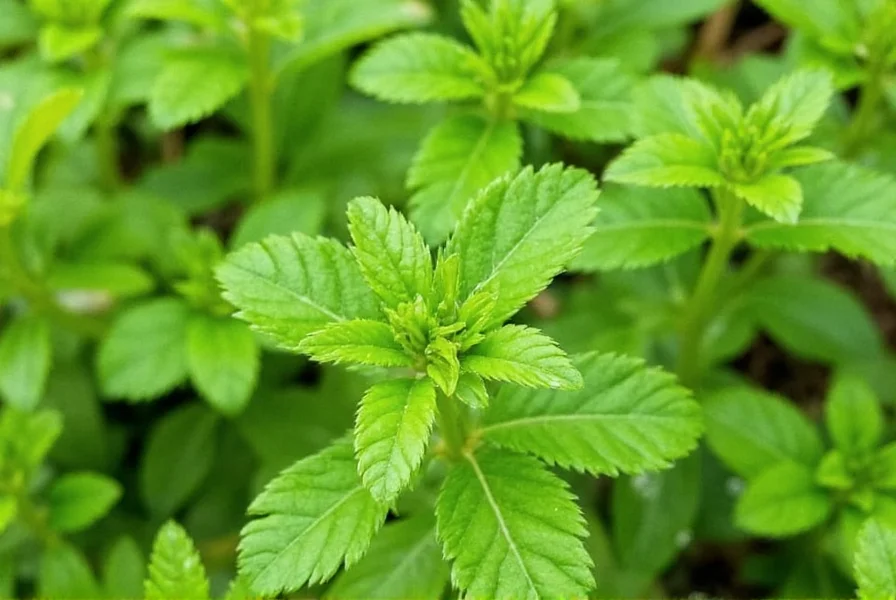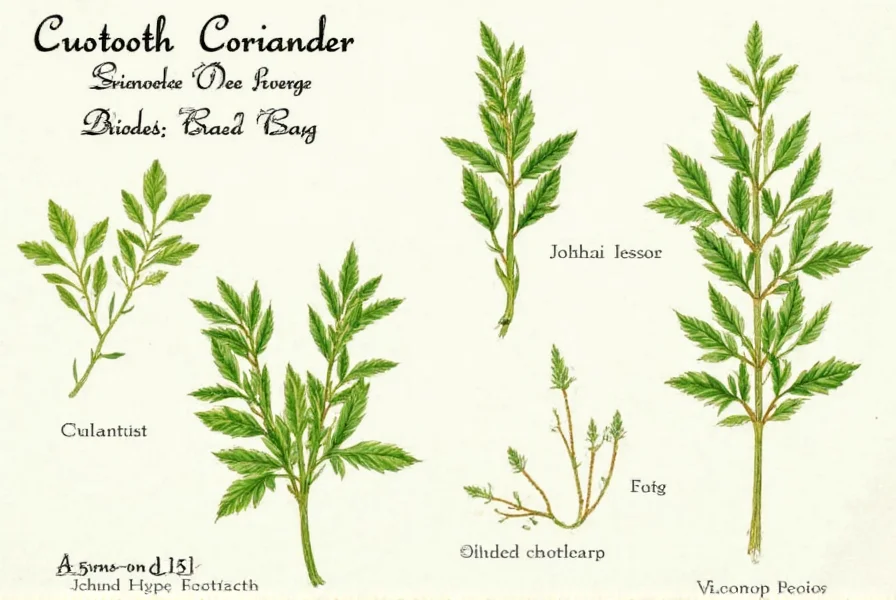Sawtooth coriander, scientifically named Eryngium foetidum, stands apart from common coriander (Coriandrum sativum) with its distinctive saw-toothed leaf edges and more potent flavor profile. This herb, often confused with regular cilantro, actually belongs to a different plant family (Apiaceae vs. Apiaceae for cilantro, though different genera) and offers unique culinary advantages. Gardeners seeking to grow sawtooth coriander should note it prefers partial shade and consistent moisture, making it suitable for container gardening in temperate regions.
Identifying Sawtooth Coriander: Key Characteristics
Recognizing authentic sawtooth coriander involves examining several distinctive features:
- Leaf structure: Long, lance-shaped leaves (2-4 inches) with pronounced serrated edges resembling a saw blade
- Growth pattern: Forms a rosette close to the ground rather than growing upright like regular coriander
- Aroma: Intensely pungent, cilantro-like scent that's noticeably stronger than regular coriander
- Flowers: Small, spiky blue flowers that appear on a central stalk when mature
- Root system: Taproot structure that makes transplanting difficult once established
| Feature | Sawtooth Coriander (Eryngium foetidum) | Regular Coriander (Coriandrum sativum) |
|---|---|---|
| Leaf Shape | Long, serrated edges (saw-tooth appearance) | Rounded, lacy edges |
| Flavor Intensity | Stronger, more persistent flavor | Milder, diminishes quickly when cooked |
| Growth Habit | Low-growing rosette formation | Upright, branching growth |
| Heat Tolerance | Excellent (withstands cooking) | Poor (flavor diminishes with heat) |
| Common Names | Culantro, Mexican coriander, shadow beni | Cilantro, Chinese parsley, coriander leaves |
Culinary Applications of Sawtooth Coriander
Professional chefs and home cooks value sawtooth coriander for specific culinary applications where regular coriander would falter. When exploring sawtooth coriander culinary uses, note that this herb maintains its distinctive flavor even when subjected to high temperatures, making it indispensable in slow-cooked dishes. Traditional Caribbean dishes like sofrito and chadon beni sauce rely on fresh culantro leaves for their signature flavor profile. In Southeast Asian cooking, particularly in越南 and Thailand, chopped sawtooth coriander enhances soups, noodle dishes, and dipping sauces with its robust cilantro essence.
For those wondering how to use sawtooth coriander in everyday cooking, consider these practical applications:
- Add chopped leaves to bean dishes and stews during the last 10 minutes of cooking
- Blend into marinades for meats, especially chicken and pork
- Mix with garlic, peppers, and vinegar for authentic Caribbean seasoning
- Use as a garnish for rice dishes where regular cilantro would wilt
- Incorporate into fresh salsas for a more persistent herbal note

Growing Sawtooth Coriander Successfully
Understanding how to grow sawtooth coriander in home garden settings requires attention to specific environmental factors. This tropical herb thrives in USDA zones 9-11 but can be cultivated as an annual in cooler climates. For optimal growth when growing sawtooth coriander, provide partial shade (especially afternoon shade in hot climates), consistent moisture, and well-draining soil rich in organic matter. Unlike regular coriander, which bolts quickly in heat, culantro actually prefers warmer temperatures between 65-85°F (18-29°C).
Successful cultivation of sawtooth coriander follows these key practices:
- Start seeds indoors 8-10 weeks before last frost or sow directly after soil warms
- Maintain consistent soil moisture (drought causes bitterness)
- Fertilize monthly with balanced organic fertilizer
- Harvest outer leaves first to encourage continuous growth
- Protect from intense afternoon sun in hot climates
- Watch for aphids and spider mites, which occasionally affect container plants
Nutritional Profile and Potential Benefits
Research into sawtooth coriander nutritional benefits reveals a rich composition of vitamins and phytochemicals. This herb contains significant amounts of vitamin A, vitamin C, calcium, and iron compared to regular coriander. Traditional medicine systems across the Caribbean and Central America have utilized culantro for digestive support and as a natural anti-inflammatory agent. While scientific research is still developing, preliminary studies suggest potential antioxidant properties in Eryngium foetidum that warrant further investigation.

Substitution Guide for Sawtooth Coriander
When substituting sawtooth coriander in recipes, understanding the flavor differences is crucial for successful adaptation. For authentic Caribbean or Latin American dishes, nothing replicates culantro's unique profile exactly. However, when seeking alternatives for sawtooth coriander, consider these substitution strategies:
- Use 3 times the amount of regular cilantro for fresh applications (but note it won't withstand cooking)
- Combine regular cilantro with a small amount of parsley for more complex flavor
- Add a pinch of coriander seed for depth in cooked dishes
- For sofrito applications, try a combination of cilantro, celery leaves, and culantro powder
- Commercial culantro paste can be used when fresh isn't available (use sparingly)
Frequently Asked Questions
Is sawtooth coriander the same as regular coriander?
No, sawtooth coriander (Eryngium foetidum) and regular coriander (Coriandrum sativum) are different plants. Though both belong to the Apiaceae family, they're from different genera. Sawtooth coriander has longer, serrated leaves, a stronger flavor that withstands cooking, and grows in a rosette pattern rather than upright like regular coriander.
Can I grow sawtooth coriander indoors?
Yes, sawtooth coriander grows well indoors with proper conditions. Use a container at least 8 inches deep with drainage holes, place in bright indirect light (east or west-facing window), maintain consistent moisture, and provide temperatures between 65-85°F. Indoor plants may need supplemental lighting during winter months for optimal growth.
Why does my sawtooth coriander taste bitter?
Bitterness in sawtooth coriander typically results from drought stress, excessive sun exposure, or harvesting mature leaves. To prevent bitterness, maintain consistent soil moisture, provide afternoon shade in hot climates, and harvest younger outer leaves rather than older center growth. Plants grown in containers may need more frequent watering than garden-planted specimens.
How do I store fresh sawtooth coriander?
Store fresh sawtooth coriander by wrapping the stems in a slightly damp paper towel and placing in a plastic bag with small ventilation holes. Keep in the refrigerator's vegetable drawer for up to 2 weeks. Alternatively, stand the stems in a glass of water (like cut flowers) and cover loosely with a plastic bag. Change water every 2-3 days for maximum freshness.
Can I freeze sawtooth coriander for later use?
Yes, freezing sawtooth coriander preserves its flavor effectively. Chop the leaves finely, place in ice cube trays, cover with water or olive oil, and freeze. Once frozen, transfer cubes to airtight freezer bags. Frozen culantro maintains flavor for 6-8 months and can be added directly to cooked dishes. Note that texture changes after freezing, making it unsuitable for fresh applications but perfect for cooked recipes.











 浙公网安备
33010002000092号
浙公网安备
33010002000092号 浙B2-20120091-4
浙B2-20120091-4